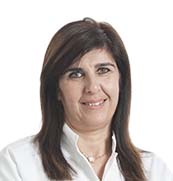- HYGEIA
- Vision & Mission
- Timeline
- Organizational structure
- Press Releases
- Social responsibility
- Awards and Distinctions
- Human Resources
- Scientific & Training activities
- Articles – Publications
- Our Facilities
- Magazines
- Healthcare Programs
- Doctors
- Services
- Medical Divisions & Services
- Imaging Divisions
- Departments
- Units
- Centers of Excellence
- Emergency – Outpatient
- Nursing Service
- Ambulances
- Patients
- Hygeia
- Υπηρεσίες
- Ιατρικά Τμήματα & Υπηρεσίες
Bone Densitometry / Osteoporosis

Bone densitometry is an exam performed to check for osteoporosis, a bone condition that develops from loss of calcium, rendering the bones thinner and more brittle.
The condition mainly affects post-menopausal women, but it may also affect men, to a smaller extent. The female-to-male ratio regarding osteoporosis is 4:1.
A limited decrease in bone density is called osteopenia, while a more extended one is called osteoporosis.
The risk factors contributing the osteoporosis are:
• Sex (female)
• Age (the risk increases over 50)
• Reduced hormones (mainly estrogen) due to the surgical removal of ovaries or early menopause
• Family history of osteoporosis
• Small body type
• Nutritional deficiencies (insufficient calcium or vitamin D intake)
• Lack of physical activity, inactive lifestyle or long-term bed rest
• Smoking, and excessive meat, alcohol and caffeine intake
• Long-term use of certain medications, such as cortisoneThe following examinations are performed:
- Lumbar spine
- Hip (left, right or both)
Bone densitometry method: there are various methods available to measure bone density. However, the most popular and reliable method is the Dual Energy X-ray Absorptiometry (DEXA) technique. It is a method that uses low-energy X-rays.
Who should undergo bone densitometry
• Women over 65
• Women over 65 with risk factors for fracture
• Menopausal women who run a greater risk of fractures due to small body frame or previous history of fractures
• Men over 70
• Men over 70 with risk factors for fracture
• Elderly individuals with conditions related to low bone mass or connected to bone mass loss
• Adults taking medication associated with low bone mass, such as cortisone
• Patients already receiving drug therapy for low bone mass and who need to have their results assessedOn which anatomical parts is the measurement performed?
According to the World Health Organization, two parts of the body are most suitable for bone densitometry: (1) the vertebrae of the lumbar spine and (2) the hip. However, it is possible to perform the measurement on other parts of the body (distal third of the radius). This is quite rare, though, while it cannot be performed on all bone densitometry devices.How is the exam performed?
Bone densitometry is a painless, bloodless and safe exam. During the exam, patients lie under the special scanner, without having to take their clothes off. The scanner moves along the entire body of the patient so as to take an image of the area of interest. The procedure does not last longer than 15 minutes.Interpretation of results
The results are expressed in T-score values with the help of a computer. The T-score value provides an indication of how high or low the bone density of a patient is, compared to the bone density of a healthy 30-year-old adult. Patients may be listed under three categories based on their bone density value:T-score > -1.0 NORMAL
-1.0 > T-score > -2.5 OSTEOPENIA
T-score < -2.5 OSTEOPOROSISWho cannot undergo bone densitometry?
(1) Women who suspect they are pregnant.
(2) Patients who have very recently undergone other diagnostic exams that required administration of contrast mediums, such as barium or Gastrografin (only pertains to lumbar spine measurement). In this case, the exam is rescheduled for a few days later, so that the contrast medium has left the body.What can affect the accuracy of the method?
Bone densitometry using the DEXA technique is an effective method for diagnosing and assessing the level of osteoporosis. However, its accuracy may be affected in the event of patients with compression fractures in the spine or presence of degenerative hypertrophic lesions in the vertebrae. Additionally, it is recommended that the exam is performed at the same time every year and at the same diagnostic center (i.e. same device) each time, to achieve better comparative results between exams. Using the same device is quite important, as there are many different types of scanners, which use different processing software (Lunar, Hologic).What happens with radiation?
The method uses X-rays. However, patients receive a very low radiation dose. As an indication, the dose is less than 1/10 of the radiation dose delivered by a standard chest X-ray and smaller than the dose each person receives daily from environmental exposure.All exams are performed using a LUNAR DPX device.
 Contact Us
Contact UsHYGEIA Hospital Secretariat
Τelephone:
+30 210 686 7660MITERA Hospital Secretariat
Τelephone:
+30 210 686 9782Medical Team
- Director of Imaging Departments of Hygeia & Mitera Hospitals
-
 Andreou Ioannis
Andreou Ioannis - Director of Hygeia Hospital
-
 Rousakis Arkadios
Rousakis Arkadios - Associate Director
-
 Efthimiadou Roxani
Efthimiadou Roxani - Assistant
-
 Filippi Vasiliki
Filippi Vasiliki - Αttending Physician
-
 Mourmouris Christos
Mourmouris Christos
- © 2007-2025 HYGEIA S.M.S.A.
- Personal Data Protection Policy
- COOKIES Policy
- Terms of Use
- Privacy Policy
- Credits
- Sitemap
- Made by minoanDesign
Ο ιστότοπoς μας χρησιμοποιεί cookies για να καταστήσει την περιήγηση όσο το δυνατόν πιο λειτουργική και για να συγκεντρώνει στατιστικά στοιχεία σχετικά με τη χρήση της. Αν θέλετε να λάβετε περισσότερες πληροφορίες πατήστε Περισσότερα ή για να αρνηθείτε να παράσχετε τη συγκατάθεσή σας για τα cookies, πατήστε Άρνηση. Συνεχίζοντας την περιήγηση σε αυτόν τον ιστότοπο, αποδέχεστε τα cookies μας.
Αποδοχή όλων Άρνηση όλων ΡυθμίσειςCookies ManagerΡυθμίσεις Cookies
Ο ιστότοπoς μας χρησιμοποιεί cookies για να καταστήσει την περιήγηση όσο το δυνατόν πιο λειτουργική και για να συγκεντρώνει στατιστικά στοιχεία σχετικά με τη χρήση της. Αν θέλετε να λάβετε περισσότερες πληροφορίες πατήστε Περισσότερα ή για να αρνηθείτε να παράσχετε τη συγκατάθεσή σας για τα cookies, πατήστε Άρνηση. Συνεχίζοντας την περιήγηση σε αυτόν τον ιστότοπο, αποδέχεστε τα cookies μας.








































